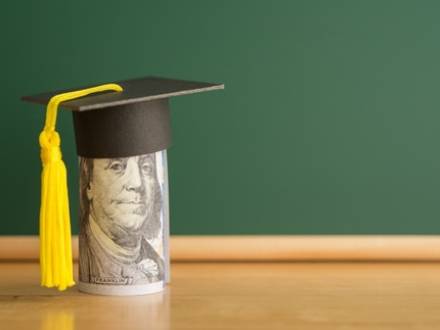What Is the Brunner Test?
 Student loans are a significant source of debt for many Americans. If you have a great deal of student loan debt you may be wondering whether it can be discharged in bankruptcy. While student loans are among the most difficult debts to discharge in bankruptcy, it is still possible to discharge student loans in some cases. Most courts use the Brunner Test, a legal test that was developed in case law, to determine whether student loans are dischargeable in a given case. An experienced Greenbelt, MD bankruptcy attorney can represent you in bankruptcy and help you discharge student loan debt.
Student loans are a significant source of debt for many Americans. If you have a great deal of student loan debt you may be wondering whether it can be discharged in bankruptcy. While student loans are among the most difficult debts to discharge in bankruptcy, it is still possible to discharge student loans in some cases. Most courts use the Brunner Test, a legal test that was developed in case law, to determine whether student loans are dischargeable in a given case. An experienced Greenbelt, MD bankruptcy attorney can represent you in bankruptcy and help you discharge student loan debt.
Are Student Loans Dischargeable in Bankruptcy?
Unlike credit cards, medical bills, and most other unsecured debts that are eliminated in bankruptcy, discharging student loans in bankruptcy is not easy. They typically survive bankruptcy proceedings and continue to follow borrowers even after they receive a discharge of their other debts.
How Does the Brunner Test Work?
The Brunner Test is the legal standard that Maryland bankruptcy courts use to determine whether student loans can be discharged. To successfully discharge student loans under the Brunner Test, you must prove that you meet all three of the following conditions:
-
You cannot maintain a minimal standard of living while repaying your student loans: This means demonstrating that making loan payments would prevent you from affording basic necessities like housing, food, clothing, and transportation. Courts examine your income and essential living expenses to determine whether loan payments would create genuine financial hardship.
-
Your financial hardship will continue for the foreseeable future: You must show that your situation is unlikely to improve significantly over the life of your loans. Courts typically require evidence of permanent disability, chronic illness, or other circumstances that severely limit your future earning capacity.
-
You have made good faith efforts to repay your loans: This involves proving that you have tried to work with your loan servicers, explored available repayment options, and made reasonable attempts to honor your loan obligations before seeking discharge.
What Happens to Student Loans in Chapter 7 vs Chapter 13 Bankruptcy?
In Chapter 7 bankruptcy, student loans are typically not affected by the discharge unless you can prove undue hardship through the Brunner Test.
In Chapter 13 bankruptcy, while student loans still cannot be discharged without meeting the Brunner Test, they can be included in your repayment plan. This means that you can potentially reduce your monthly student loan payments during the three to five year Chapter 13 plan period while the automatic stay is in effect, giving you time to pay some of this student loan debt and other debts. Although any unpaid balance at the end of your Chapter 13 plan will still be owed in full, you are likely to be in a better position to pay the remainder.
Call a Greenbelt, MD Bankruptcy Attorney
If you are struggling to pay back your student debt, the experienced Bowie, MD bankruptcy attorney at The Law Office of Donald L. Bell can advise you on your options to discharge this debt in bankruptcy. The law firm focuses on helping individuals with mounting debt in bankruptcy. Call us for a complimentary consultation at 301-614-0535.






